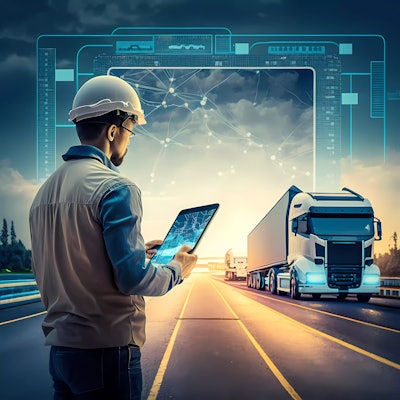
Last-mile, or final-mile delivery, is the final stage of transporting products to the end user. Think of delivering a piece of furniture from the warehouse to the new homeowner. It’s also the most expensive part of the supply chain, accounting for 53% of total shipping costs in 2023 (Statista). As important as last-mile delivery is, it’s a fragmented space, where businesses are losing precious time, money and resources from operational inefficiencies.
But why is this the case? Well, prior to delivery software platforms, there was no single national solution and many businesses had to piece together their own network of thousands of courier vendors across the country, as well as find separate providers to manage their internal fleet.
This ultimately caused delivery fragmentation because assets like cargo vans, box trucks and other vehicles are extremely expensive, and it’s hard to scale a business bringing these assets to new markets. Plus, there are many costs and logistical challenges along the way.
The solution to the delivery fragmentation problem? Technology. Sophisticated, scalable technology is able to bridge the gap by connecting these fragmented assets in a way they can be leveraged holistically across the country from one point of operational control. With delivery software, businesses can manage operations and streamline processes on a single platform.
Last-Mile Delivery Growth
According to Statista, the global last-mile delivery market is expected to grow by about 8% a year to more than $200 billion by 2027. This growth is already happening, and businesses need to adopt solutions now to support operations and stay competitive.
The key to delivery success and bridging the fragmentation gap is to start with a solid software foundation centered around uniformity and consolidation. While trending delivery technologies like autonomous vehicles, robots, drones, and lockers are making headlines, it’s important to implement reliable and efficient software that aligns with your business goals and objectives.
With sophisticated delivery software, businesses can eliminate manual processes and tasks, consolidate operations, and gain efficiencies like never before. If implemented correctly, it can drive exponential growth. Just make sure you upgrade your delivery logistics with your customers and other stakeholders top-of-mind.
The Customer Approach
Be practical for your customers. While drone deliveries and robots are exciting technology innovations, ask yourself “Who is this exciting for?” It’s vital to understand your customer’s immediate and long-term needs.
Let’s say you have an HVAC technician at a customer job site who needs a part right now in order to get the job done. Sure a drone delivery would be cool, but is it reliable or timely? The technician needs a delivery solution so they can save time, which saves the company money and resources, to finish the current job and move on to help the next customer.
You and your employees need the ability to easily place orders, have full transparency into the delivery process, have full communication with customer service and drivers and know exactly when the item will be delivered. Your team and customers deserve an efficient delivery system you can rely on.
Tried & True Technology
To consolidate delivery operations and gain efficiencies, it’s important to look for these features when selecting a sophisticated software solution for your business:
- Order Tracking: Track your orders in real-time with dynamic ETAs, GPS tracking and shareable links so your team and customers have full visibility and stay in the loop. Having this information keeps everyone informed of the delivery status without having to make extra phone calls or waste time wondering where the package is in transit.
- Proof of Delivery: Have peace of mind knowing your part or package arrived on time, where it was left and get driver confirmation with photo proof of completion. If a photo is worth a thousand words, what would photo proof and delivery signature be worth? Having confirmation your delivery is complete is priceless.
- Reporting: Make data-informed business decisions. Advanced delivery reporting shows you data points like spending amounts, frequent orders, and future forecasts. Having historical data and current trends can help you make strategic delivery moves that support your customers and your bottom line.
To take it a step further, find a solution that also provides delivery management software to manage your internal fleet and drivers. You can better visualize and organize your daily deliveries and eliminate manual assignment and routing tasks. Then as you scale your business, API integrations provide all the benefits embedded right into your business for optimal efficiency and optimization.
Future Growth Starts Today
With delivery software designed for your business operations, you and your team can automate manual work and processes, look at operations holistically, derive high-level pain points and competitive advantages, and determine where to double down on internal efforts. While there is a monetary investment in software, the long-term value and benefits far outweigh the upfront costs of implementing it into your tech stack.
This is the year for delivery software and technology is only going to continue to improve and drive growth for businesses and consumers.
















![Pros To Know 2026 [color]](https://img.sdcexec.com/mindful/acbm/workspaces/default/uploads/2025/08/prostoknow-2026-color.mduFvhpgMk.png?ar=16%3A9&auto=format%2Ccompress&bg=fff&fill-color=fff&fit=fill&h=135&q=70&w=240)



